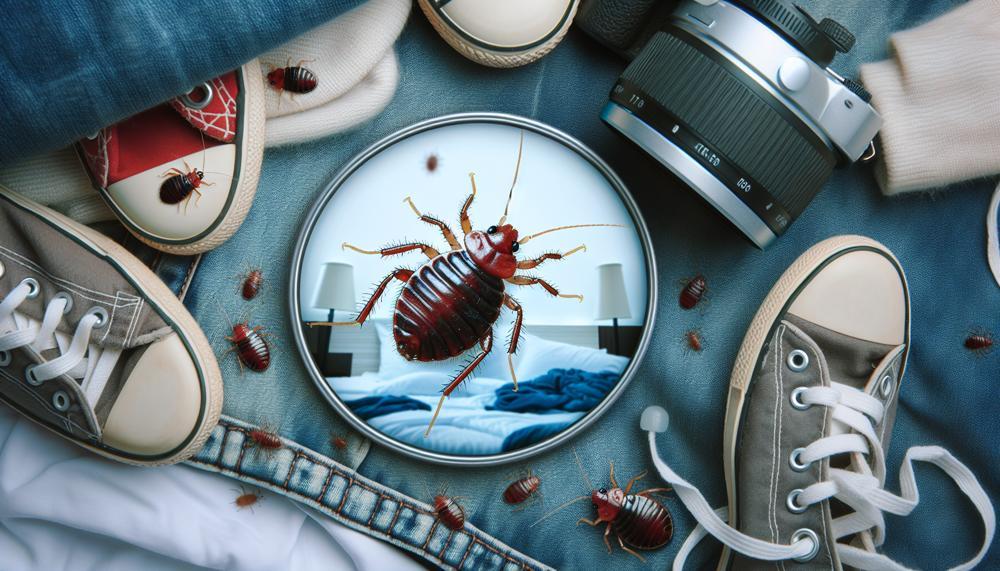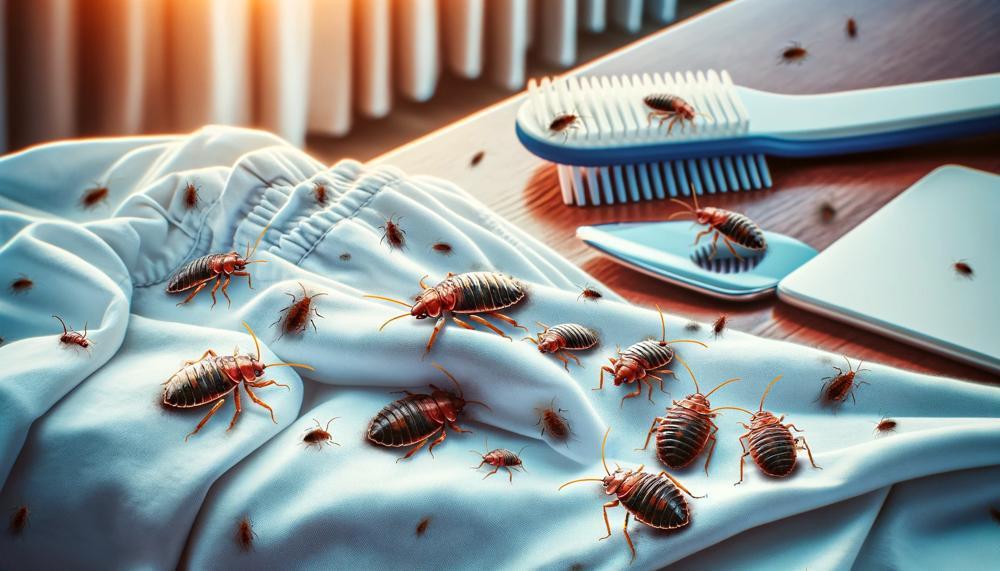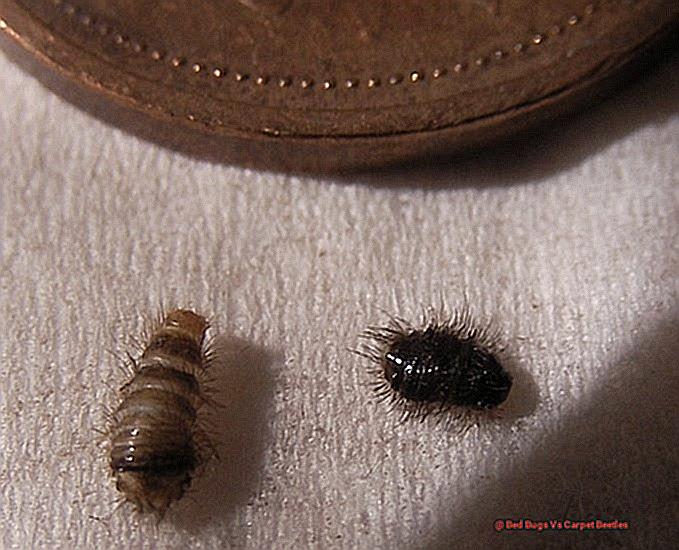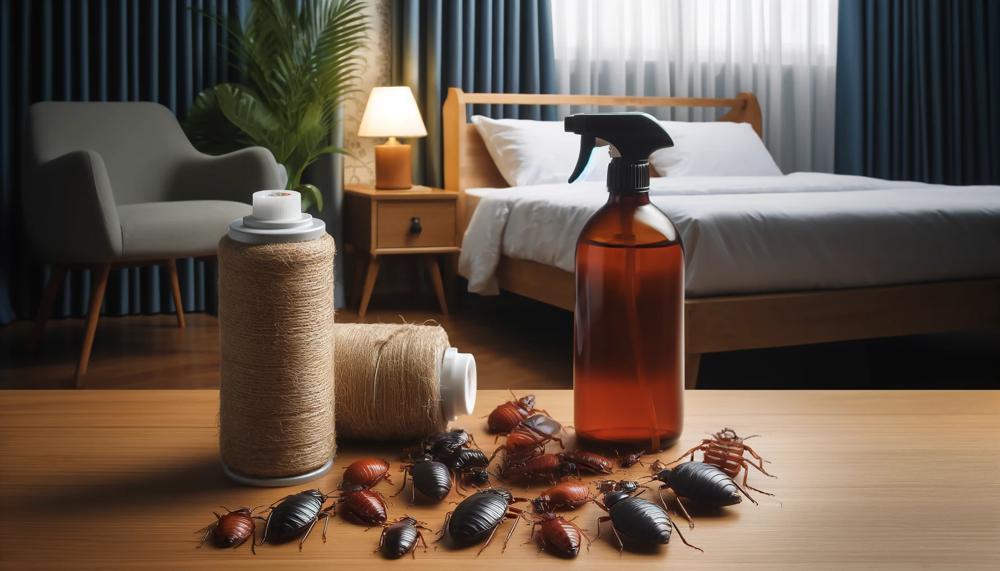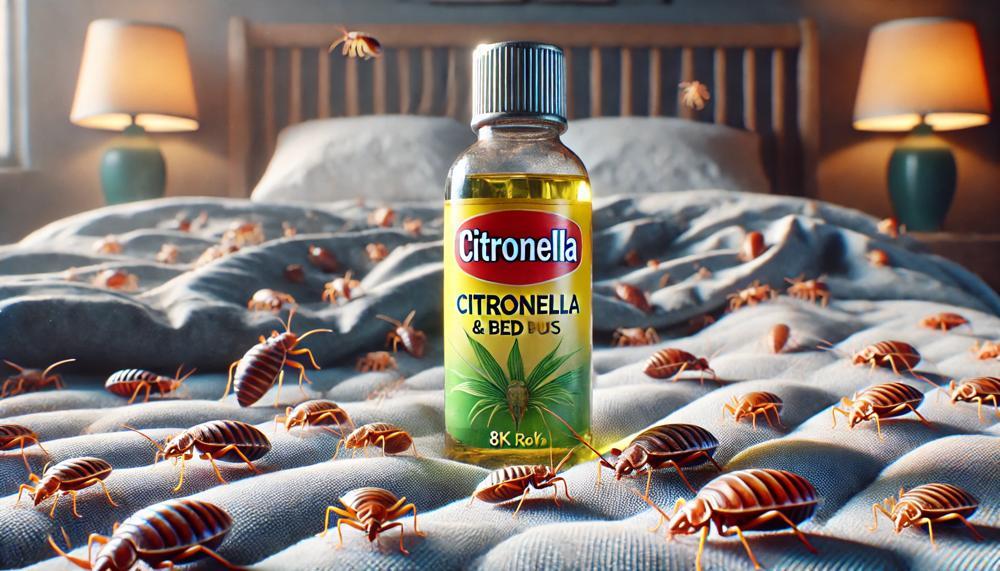Imagine this: You’re finally ready to hit the hay after a tiring day, snuggled up in your soft pajamas and tucked under the covers.
But just as you start to drift off into dreamland, you feel a sharp pinch on your arm. You turn on the light and catch a glimpse of a tiny bug scurrying away – a bed bug.
The mere thought of these blood-sucking pests is enough to make anyone’s skin crawl. And while we may think our clothing provides a barrier against them, can they actually bite through it?
So, grab your comfiest blanket and get cozy, because we’re about to uncover the truth about these pesky insects.
Table of Contents
- 1 Understanding Bed Bug Bites
- 2 Can Bed Bugs Bite Through Clothes?
- 3 Bed Bug Infestation and Hiding Spots
- 4 Preventing and Eliminating Bed Bug Bites
- 5 Home Remedies for Bed Bug Bites
- 6 Protecting Yourself and Your Belongings
Understanding Bed Bug Bites
The sudden appearance of red welts on your skin can be perplexing and alarming. Could it be the work of bed bugs? You’re not alone in this dilemma. These pesky pests can cause havoc if not dealt with promptly. People often ask whether bed bugs can penetrate clothing with their bites, and the answer may catch you off guard.
First and foremost, it is essential to note that bed bugs do not possess specialized mouthpieces to bite through fabric.
However, their minuscule size and ability to maneuver through narrow spaces make it possible for them to find a way to reach exposed skin, even through clothing. So, how can one determine if a bed bug has bitten through their clothes?
Examine the Bite Pattern
One effective method to identify whether a bed bug has bitten through your clothing is by examining the pattern of bites.
Bed bug bites typically appear in clusters or lines, with multiple bites in one area. If you notice such a pattern on exposed parts of your body, it is highly likely that the culprit was direct skin contact.
Check for Blood Stains on Clothes
Another way to confirm if a bed bug has bitten through your clothing is by checking for bloodstains on your garments.
After feeding, bed bugs leave behind tiny droplets of blood that may be visible on light-colored clothing. If you find such stains after experiencing bites, it is probable that bed bugs managed to bite through your clothes.
Consider Location and Tight-Fitting Clothing
Bed bugs tend to bite areas of the body that are exposed while sleeping, such as the face, neck, arms, and hands. If you have bites in these regions while wearing clothes, it is possible that the bed bugs could penetrate your garments.
Moreover, tight-fitting clothing makes it easier for bed bugs to bite through fabric and reach your skin.
Take Precautions to Avoid Bed Bug Bites
To prevent bed bug bites, it is crucial to regularly inspect for signs of infestation and properly launder clothes and bedding. When traveling, take precautions to avoid transporting bed bugs back home by washing clothes in hot water and using high heat.
Consider utilizing bed bug-proof products, like mattress encasements or traps, to prevent infestations at home or in hotels.
Can Bed Bugs Bite Through Clothes?
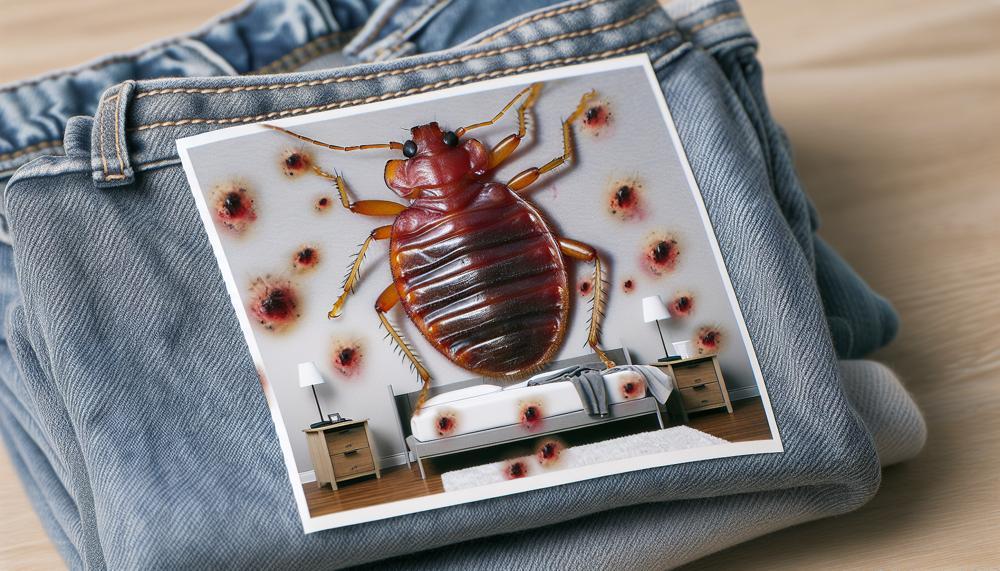
As if the mere thought of dealing with bed bugs wasn’t already enough to cause stress and anxiety, now you’re left wondering if these pesky pests can bite through your clothing. The answer may come as a surprise to you.
Despite not having specialized mouthpieces designed to penetrate fabric, bed bugs possess the uncanny ability to maneuver through tight spaces and reach your exposed skin, even when covered by clothing.
Bed Bug Infestation and Hiding Spots
The elusive bed bug, with its uncanny ability to hide in the most unexpected places, is a notorious pest that can wreak havoc on homes. These tiny creatures are masters of disguise and can easily go unnoticed, making it a daunting task to detect and eliminate an infestation. In fact, they have been known to survive extreme temperatures and even pest control treatments, making them a formidable foe.
As someone who has battled these pesky bugs, I have learned the hard way about their favorite hiding spots and how to effectively get rid of them.
Suitcases are one of the most common ways bed bugs make their way into our homes. These sneaky critters often hitchhike on our luggage when we travel, making it crucial to always inspect our suitcases and clothing before bringing them inside. I still remember the time I brought home a suitcase from a hotel and found myself facing a full-blown bed bug infestation. Lesson learned – always check your luggage and wash your clothes on high heat after traveling.
But it’s not just suitcases that bed bugs like to hide in. They can also make themselves at home in cardboard boxes, especially when stored in dark and undisturbed areas. As I discovered while unpacking my winter coats from storage, these pests can easily hide in the folds of fabric. That’s why it’s important to carefully inspect all items before bringing them into your home.
Even our footwear is not safe from these tiny terrors. Bed bugs can easily hide in shoes, especially if they are not worn frequently. I now make it a habit to regularly inspect my shoes, especially after visiting places with known bed bug infestations.
Don’t be fooled by their size – bed bugs are experts at squeezing into tight spaces. Baseboards are a popular hiding spot for them, as they can easily slip into cracks and crevices. It’s important to regularly inspect and seal any openings where these sneaky bugs may be hiding.
In addition to baseboards, bed bugs can also lurk in any small cracks or crevices around the house. This includes walls, furniture, and flooring. To prevent them from entering or hiding in these areas, it’s crucial to thoroughly inspect and seal any openings.
But perhaps their most notorious hiding spot is in our beds. As their name suggests, bed bugs are often found in and around our sleeping area.
Preventing and Eliminating Bed Bug Bites
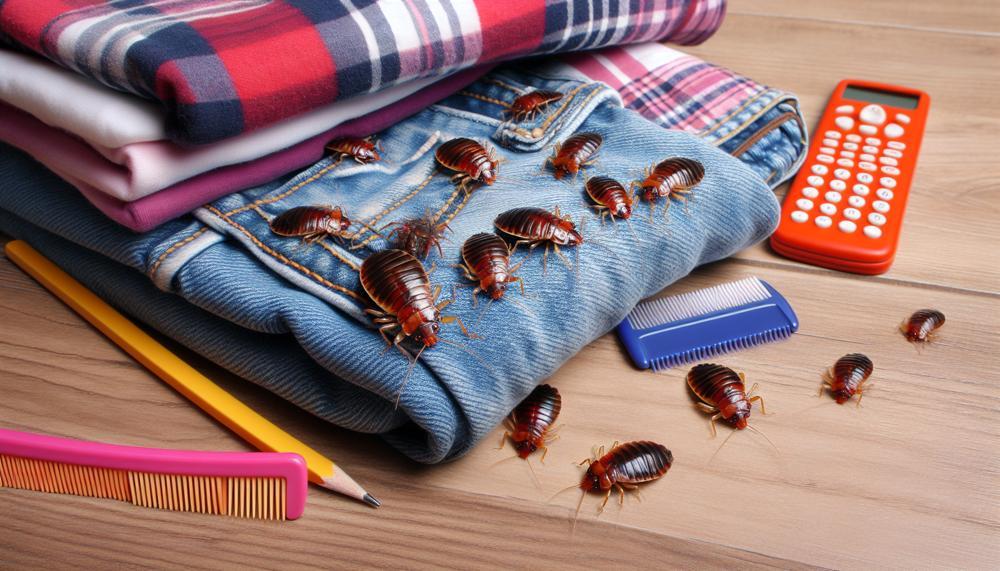
Bed bugs are not just a childhood rhyme; they are an actual problem that can cause severe discomfort with their bites. These small pests, known for their ability to hide in tiny cracks and crevices, can leave behind itchy, red bites that can ruin your day.
But do not worry, as someone well-versed in bed bug prevention and elimination, I am here to share my expertise and assist you in eliminating these annoying bugs from your home.
Preventative Measures Against Bed Bug Bites:
Inspect Your Suitcases and Personal Belongings:
As mentioned before, bed bugs are often brought into homes through infested luggage or personal belongings. To prevent this, it is vital to thoroughly inspect your suitcases and belongings before bringing them inside.
Check for any signs of bed bugs, such as live bugs, shed skins, or dark spots (fecal matter).
Be Vigilant When Traveling:
Bed bugs are often found in hotels, motels, and other accommodations. When traveling, it is crucial to be cautious and take preventative measures. Inspect the room for any signs of bed bugs before unpacking and avoid placing your luggage on the bed or furniture.
Additionally, consider using a protective cover for your luggage.
Keep Your Home Free of Clutter:
Clutter provides an ideal hiding spot for bed bugs. Therefore, it is essential to keep your home clutter-free and minimize potential hiding places for these pests.
Use Protective Covers:
Protective covers for mattresses and box springs can help prevent bed bugs from infesting these areas. The covers should be made of durable material and have zippers that completely enclose the mattress and box spring.
Effective Elimination of Existing Infestations:
Hire a Professional Pest Control Service:
If you suspect or have confirmed a bed bug infestation in your home, it is best to contact a professional pest control service. They have the knowledge and equipment to effectively eliminate bed bugs from your home.
Thoroughly Vacuum and Clean:
Vacuuming is an effective way to remove bed bugs and their eggs from carpets, mattresses, and furniture. Be sure to dispose of the vacuum bag or empty the canister outside of your home to prevent reinfestation.
Home Remedies for Bed Bug Bites
Bed bug bites can be a total nightmare to handle. These tiny pests leave behind irritating, crimson, and often agonizing bites that can disrupt your sleep or daily routine.
But before resorting to harsh chemicals or seeking extermination services, try these simple yet effective home remedies to ease the symptoms of bed bug bites.
Icy Compresses
One of the quickest and simplest ways to alleviate the itching and pain of bed bug bites is by using an icy compress on the affected area.
All you need to do is wrap a cloth or ice pack in a towel and place it on the bite for 10-15 minutes. This will help reduce swelling and numb the area, providing temporary relief.
Baking Soda Paste
Baking soda boasts natural anti-inflammatory properties, making it an efficient remedy for reducing redness and itchiness caused by bed bug bites.
Create a thin paste by mixing baking soda with a small amount of water, then apply it directly on the bites. Leave it on for 10-15 minutes before rinsing off with cool water.
Soothing Calamine Lotion
Calamine lotion has been used for years as a treatment for insect bites and rashes. Its calming properties can help alleviate itching and promote healing of bed bug bites.
Just apply a small amount of calamine lotion on the affected area and let it dry before covering with clothing.
Moisturize Your Skin
Dry skin can intensify itching, so it’s crucial to keep your skin moisturized when dealing with bed bug bites.
Apply a gentle, unscented moisturizer on the affected area throughout the day to soothe the skin and prevent further irritation.
Over-the-Counter Solutions
There are various over-the-counter topical creams and products specifically designed to ease itching from insect bites.
Look for products containing ingredients like hydrocortisone or lidocaine, which can provide temporary relief from itchiness.
Along with these remedies, addressing the root of the problem is crucial by eliminating bed bugs from your home. This can be achieved through professional pest control services or DIY methods such as thorough vacuuming and washing infested items in hot water.
Remember, prevention is key when it comes to bed bugs.
Protecting Yourself and Your Belongings
The incessant itching. The red, inflamed bites. The relentless bloodsuckers known as bed bugs can bring more than just physical discomfort – they can also transmit diseases and trigger allergic reactions.
There are ways to defend yourself and your belongings against these pesky pests. Follow these simple yet potent steps to keep bed bugs at bay.
Detect Deviously Disguised Infestations in Second-Hand Furniture
One of the most common ways bed bugs infiltrate our homes is through used furniture. Before bringing any second-hand items into your abode, diligently inspect them for any signs of bed bug presence.
Look for tell-tale dark spots, discarded exoskeletons, or the bugs themselves scurrying about. If you spot any evidence of these bloodthirsty intruders, do not let the item enter your home.
Vacuum Vigorously and Regularly
A crucial step in preventing bed bug infestations is frequent vacuuming. Be sure to thoroughly vacuum all areas of your home – carpets, furniture, curtains – to eliminate any potential hiding spots for these pint-sized pests.
After use, promptly empty the vacuum bag or canister to prevent any potential escapees.
Utilize Protective Covers for Your Mattress and Box Spring
Investing in protective covers for your mattress and box spring can be a game-changer in warding off bed bugs from infiltrating your bedding.
These covers act as a barrier, making it arduous for the bugs to penetrate and feast on your blood.
Declutter Your Domicile
Clutter creates ideal hiding places for bed bugs, which makes it easier for them to infest your home.
Keep your living spaces clean and clutter-free to eliminate potential havens for these pests.
Keep Your Possessions Partitioned in Public Spaces
When using shared public spaces – libraries, laundromats – make sure to keep your belongings separated from others.
Utilize plastic bags or hooks to prevent bed bugs from crawling onto your possessions.
Opt for Accommodations with Air Conditioning or Window and Door Screens
When traveling, choose lodging with air conditioning or window and door screens. These barriers make it challenging for bed bugs to enter your room and can provide a more comfortable sleeping environment.

